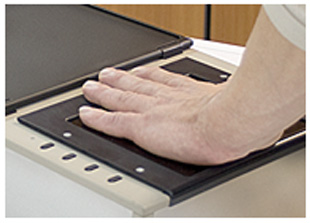 Editor’s note: Access, Control and Technology are all important components of a secure construction site. In part three of this series last week, Jim Kollaer explained the second of three keys to security: Control. He concludes by addressing the final key to jobsite security: Technology.
Editor’s note: Access, Control and Technology are all important components of a secure construction site. In part three of this series last week, Jim Kollaer explained the second of three keys to security: Control. He concludes by addressing the final key to jobsite security: Technology.
Technology
Technology is the third leg of your ACT jobsite security plan. Wireless cameras are being used more frequently to monitor jobsites on a 24-hour basis. In fact, a number of cities and your insurance underwriters require that the recordings from those cameras be stored off-site and be kept for inspection for a minimum of 60 days in case of an accident, vandalism, lawsuit or theft on the jobsite. Those camera locations should be coordinated with the local authorities and with the neighbors who also might have camera locations that can help you monitor activity on-site. Some cameras are motion triggered as are floodlights that you might use to act as deterrence to thieves, vandals or anyone who might try to enter the site after hours without permission.
The ID Technology being used in jobsite security includes the increasing use of wireless and
RFID chips. Those technologies should be considered in your ACT plan. Levels of identification and certification of the workers on your site can include: company photo id cards – some with embedded RFID chips, hard hats with embedded RFIDs, driver’s licenses, bio sensors including palmprint ID, fingerprint ID, and iris scanners. Increasing levels of security include combinations of those technologies and are being used on construction sites more frequently than ever before. The monitoring of those ids for ID substitution (where a person with a similar face and name gains a certification and then substitutes another pic so that the unqualified worker can gain access to your jobsite) is critical to the safety of the other workers on your site. You can hire specialists to do that work on staff, or you can hire private third-party firms such as Dallas-based FC Background, to come on-site to do that work for you.
The EPA, OSHA, and other state and local agencies require that monitors and testing of all types be used to control and test for toxics and other chemicals which might cause problems for the workers on your jobsite. Increasingly those monitors are wireless and are linked into a network that monitors the overall health of your jobsite – sometimes even tied into the BIM for your job as a way to fully monitor the site. These technologies should be included in the technology portion of your ACT jobsite security plan. While your projects may not be of a size that justifies all of those measures, you should be aware of what is required and what is available so that you can keep your jobsite and your workforce secure.
Equipment control is becoming more sophisticated. Barcoding, wireless location technology, and mobile tool cribs have been in use for over a decade. According to a recent article on tool tracking in ENR, the current state of the art looks like this:
“‘Last year, we introduced PROTOid, a line of sockets and wrenches with embedded RFID tags in the tool itself’, says Susan Hebrank, marketing services coordinator for CribMaster, which offers fully automated, mobile tool cribs. Stanley Black & Decker, which owns CribMaster, acquired AeroScout, a maker of real-time locating systems, in 2012. The firm is looking to bring its active wireless location technology to tools, says Hebrank.”
Wireless linking of the people, equipment and tools on your jobsite is a reality today and is available should you need it from a variety of vendors.
Jobsite security is serious business for all of us in construction. Done well, it can save us money, reduce risk, and support the health of our businesses. Done poorly, it can cost us everything we have worked to create. Never has jobsite security been more top of mind than today when markets are recovering, skilled worker shortages are emerging, workers are desperate for jobs, and construction schedules are once again pressuring our subs and their workforce. No matter where your projects are located, what size your project is, whether it is a “ground up” or a remodel, you need to be aware of and ACT now on your jobsite security needs and requirements in order to ensure that your jobsite is safe and secure throughout the entire construction period. In the words of my first construction boss, “Nail it down, lock it up, and ACT now.”
Photo courtesy BioLink Solutions
ACT Now on Jobsite Security, Part 4 of 4
by Jim Kollaer | December 26, 2013



Add new comment